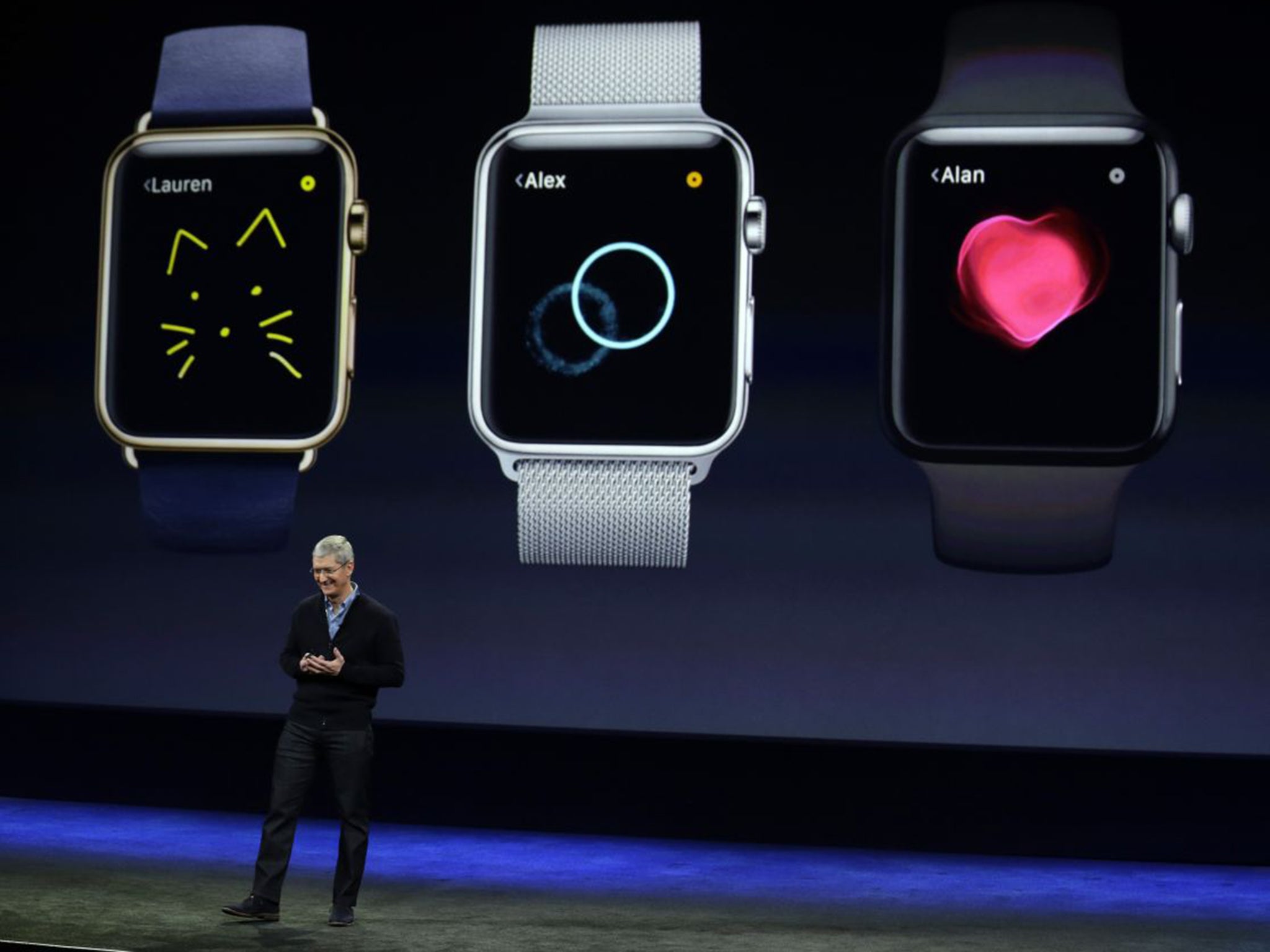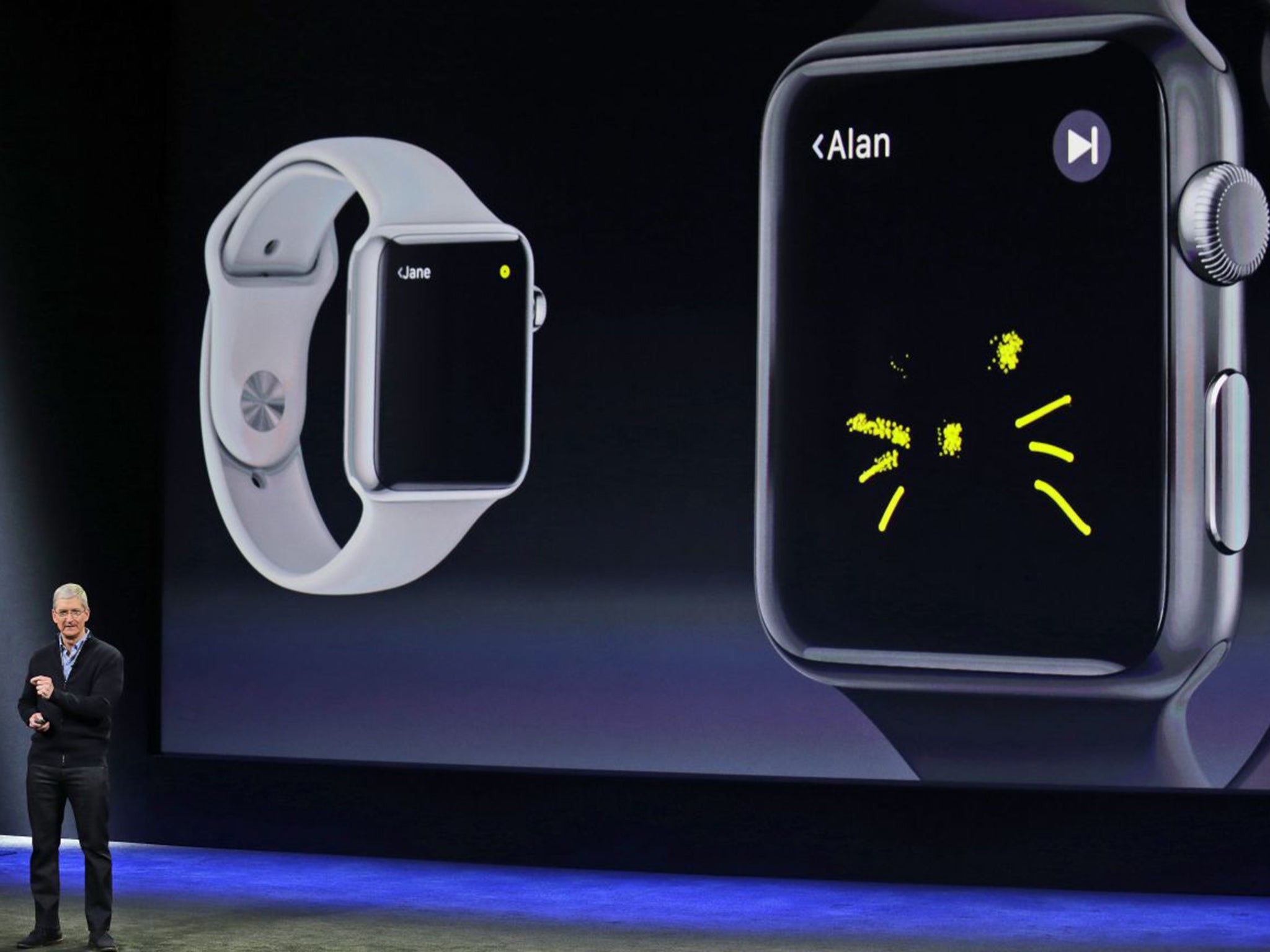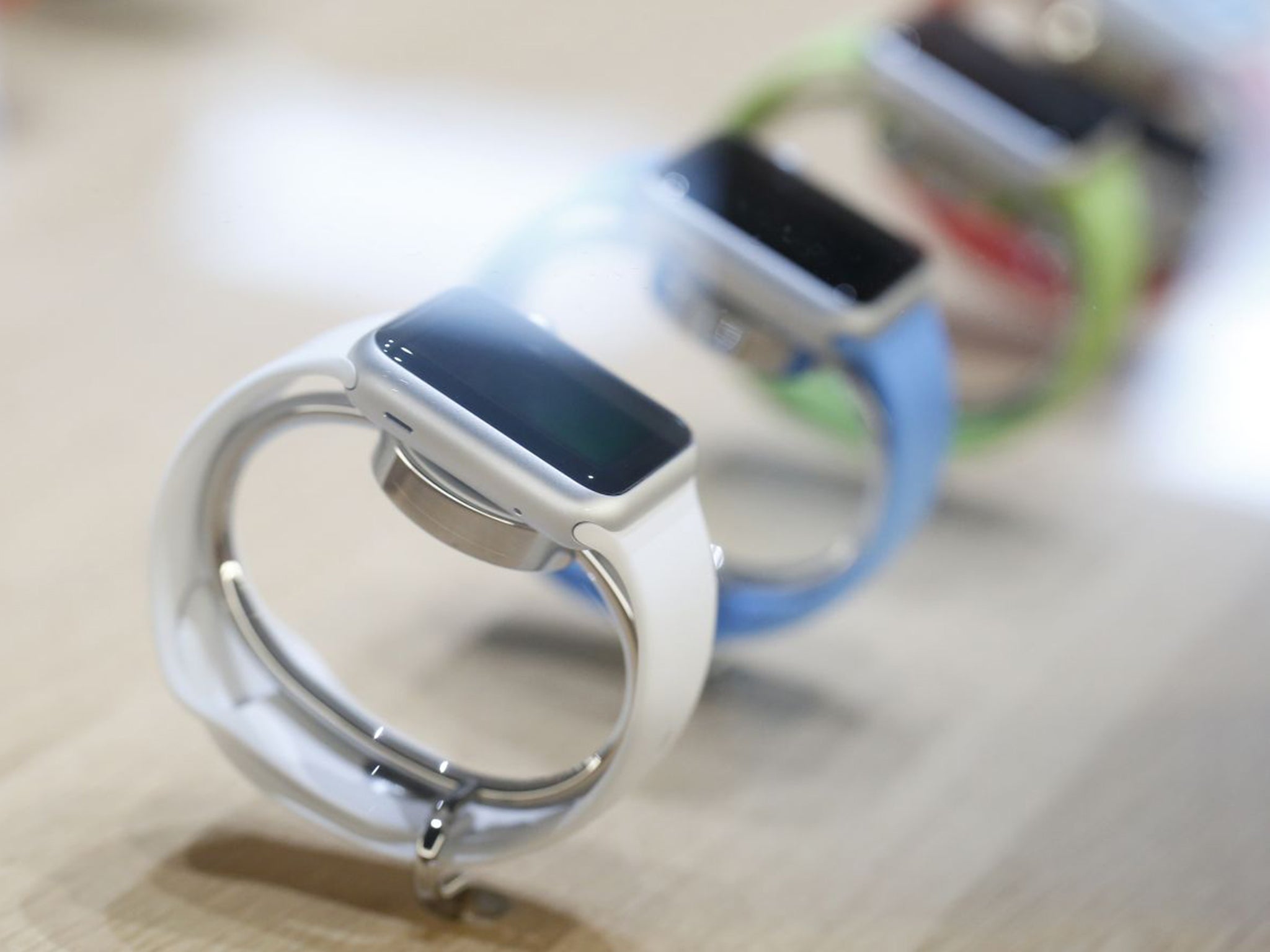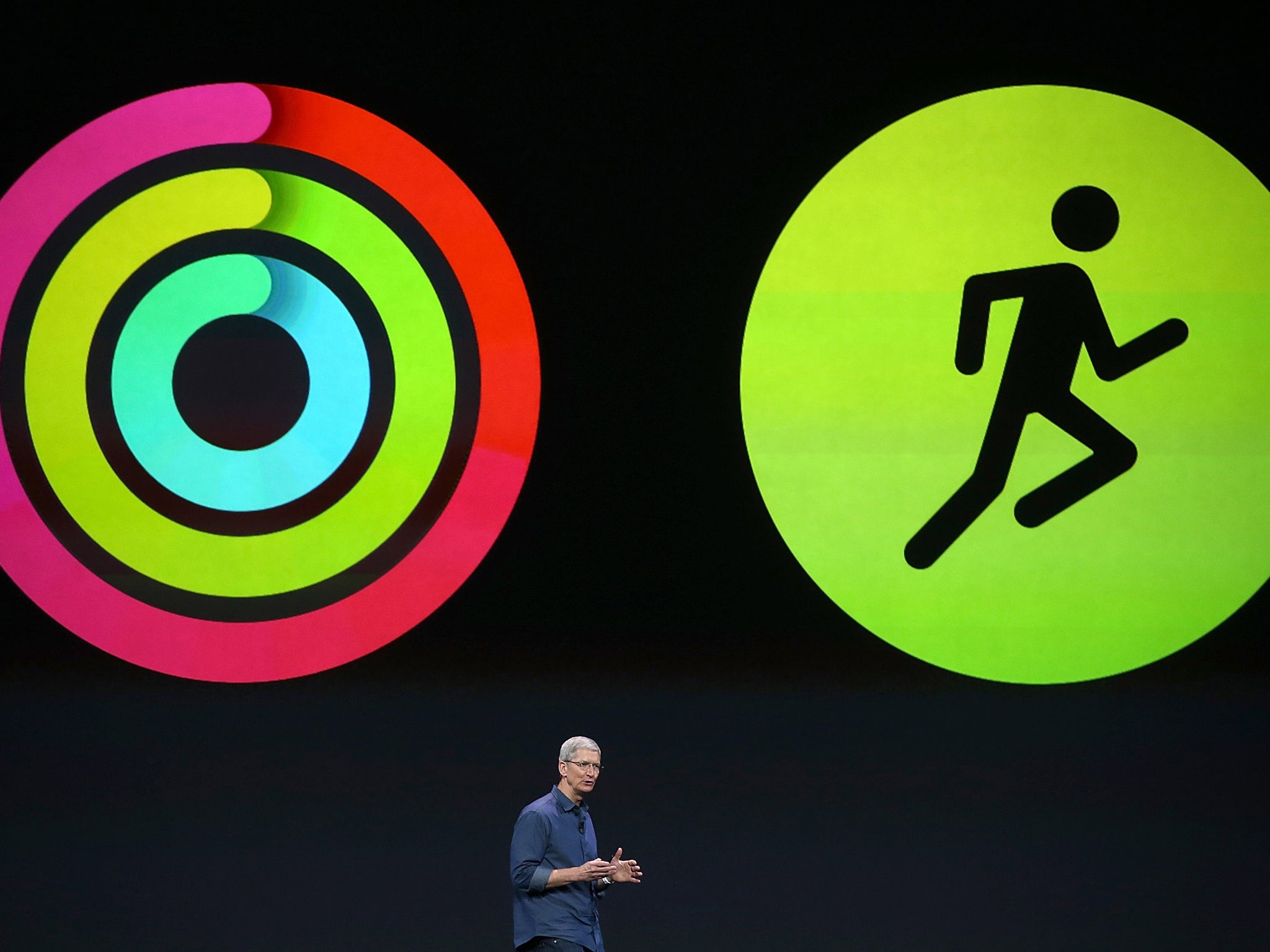Apple Watch apps: developers scramble to make apps for still-mysterious smartwatch
Apps will make or break the Apple Watch — but it's still unclear exactly what they'll be able to do

Your support helps us to tell the story
From reproductive rights to climate change to Big Tech, The Independent is on the ground when the story is developing. Whether it's investigating the financials of Elon Musk's pro-Trump PAC or producing our latest documentary, 'The A Word', which shines a light on the American women fighting for reproductive rights, we know how important it is to parse out the facts from the messaging.
At such a critical moment in US history, we need reporters on the ground. Your donation allows us to keep sending journalists to speak to both sides of the story.
The Independent is trusted by Americans across the entire political spectrum. And unlike many other quality news outlets, we choose not to lock Americans out of our reporting and analysis with paywalls. We believe quality journalism should be available to everyone, paid for by those who can afford it.
Your support makes all the difference.In the wake of the Apple Watch announcement on Tuesday, and especially the revelation that some of them will cost over £10,000, one question has rung out: what is the Apple Watch for? The answer will depend entirely on the apps that are made for it — and, since the mystery device was unveiled in September, developers around the world have been scrabbling to make that slim chunk of metal, glass and silicon into something that will matter to people’s lives.
Certain uses might seem obvious — messages popping up on your wrist, so that you don’t have to look at them on the phone, or maps instructions that you can look at while walking. At the launch this week, Apple’s executives took viewers through a standard day — using the watch to check into hotel rooms, to book cabs, to read and reply to messages, make phone calls and let their abandoned daughters into their house using an internet-enabled garage door.
Those were just some of the many apps that have been announced by Apple that will work on the platform from launch. Uber, Instagram, Twitter, CNN, eBay, Shazam and Expedia have all announced apps. But fewer of them have said exactly what they’ll do — and, more important, why we’ll need them.
Even the companies themselves weren’t sure, only months ago. Developers saw the same rumours everyone else did in the run-up to the announcement of the watch in September — expecting something, but without knowing exactly what. Apple unveiled the Apple Watch then, and soon after developers got to work sketching out.

It wasn’t the first time Apple has unveiled a mystery product and then let developers get to work — when the iPad came out, the company didn’t specify exactly how big it was or have versions to try out, so designers were left sketching their ideas out on cut-outs and paper models of the tablet. The same thing happened again this time around, with developers needing to design an app for a platform that was still mostly secret.
Even after the watch was unveiled this week, nobody’s clear who’s going to wear it, or exactly why they’ll do so. Those might interesting questions for people waiting to see how the future plays out — but for developers, getting the answers right could be lucrative, and getting them very wrong will be expensive.
Evernote, the note taking app, has made apps for previous watches. The Pebble, a watch with an e-ink screen that can show notifications from iOS or Android, has an Evernote app; Android Wear, the version for Google’s mobile operating system, does too.

But the Apple Watch is something new entirely — it likely marks the first moment that smartwatches move away from being the preserve of the cutting edge and the geeks, and onto the wrists of normal people. Developing for those people is different too — Evernote’s vice president of mobile products, Jamie Hull, oversaw development for the Apple Watch and says that the company “tried to tailor our functionality to be a bit more accessible”. Most people with existing watches are by their very nature people more willing to try out new technology — and so probably knew their way around the Evernote’s more advanced features, and were willing to try things out — but the Apple Watch is likely to make those things go mainstream, and so apps for the service should be more mainstream too.
But those mainstream uses need also to suit the form. Watches make sense for quick glances, but a lot less sense for anything that requires lots of interaction or time.
Evernote worked to ensure that you could do something useful on the watch within three or five seconds — or not do it at all. If anything takes longer than that, then users will still need to take out their phone.

For a note service, the most obvious of those interactions is making a note. Evernote’s app will offer the opportunity to capture something as you’re walking along — an idea can be spoken into the watch, and saved as dictated text.
And users can also search through those notes once their made, speaking queries into the watch or looking through recent searches and files. Evernote has worked with its “augmented intelligence” team to come up with special note lists for the watch, which will pull together information like calendars and location to work out what will be most interesting at that time.

The simplicity of those tasks is not just an aesthetic concern, or a matter of making the watch easier to use — it’s absolutely necessary, given the watch probably can’t do much on its own. It’s still unclear exactly how high-performance the watch is, but it’s expected that it will have to hand off much of the serious processing work to the phone, which is part of the reason it needs to be tethered to one at all times.
So app developers must ensure that the phone is clever enough to know what to work out and what to hand off. The augmented intelligence trick is one of those, helping the watch to learn when it needs to pull information through, and when it can leave stuff to the bigger, more powerful phone in its owner’s pocket.
Developers don’t want the watch to replace a phone, and neither does Apple. Instead, they want it to serve as a very clever accessory — feeding information either to or from the phone to users.
As such, Evernote and other developers are aware that the best way to do anything serious with the watch is always to give the option of moving back to the phone when things get complicated. Apple made that much easier last year when it announced Handoff and Continuity — two features of its new operating systems that allow all the devices in the Apple ecosystem to work a lot more smoothly together. If you’re writing an email, you could already stop what you’re doing on your phone and start on your computer — now you can do the same thing with a watch.
For developers and everyone else, there are still plenty of unknowns. How long will the Apple Watch’s battery last, really? How powerful will its processors be? Will people actually by them? And, if they do, how will they use them?
The watch arrives in stores on April 10, and then can be bought two weeks later. Developers and their apps will be ready — all that’s left is whether people’s wrists and wallets are.
Join our commenting forum
Join thought-provoking conversations, follow other Independent readers and see their replies
Comments